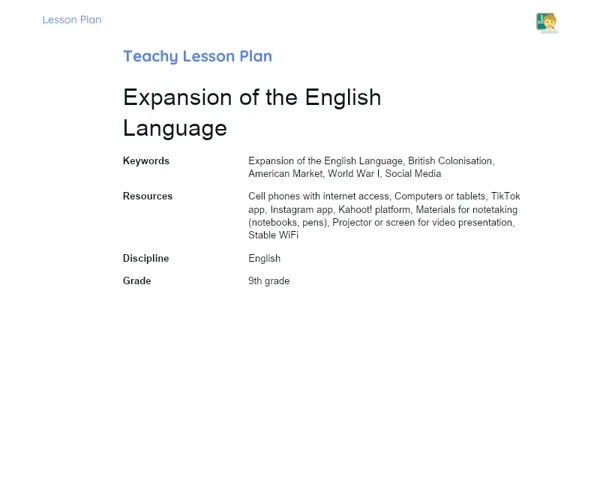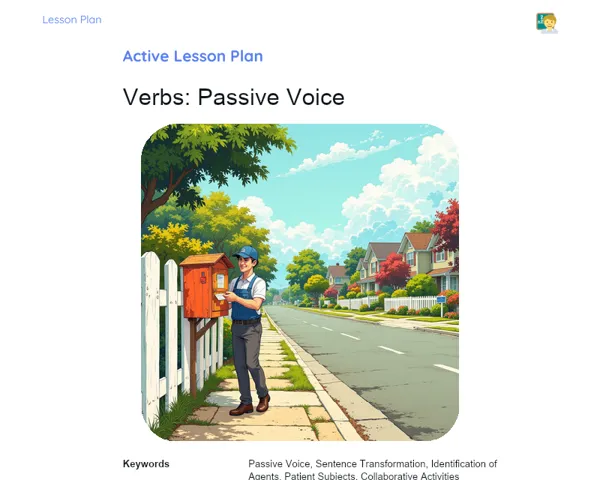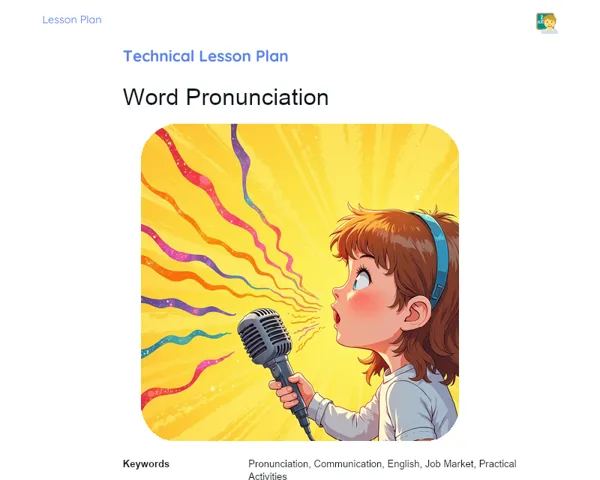Lesson Plan | Socioemotional Learning | Verbs: Simple Past and Present Perfect
| Keywords | Simple Past, Present Perfect, English, Verbs, Socio-emotional Skills, Self-awareness, Self-control, Responsible Decision-Making, Social Skills, Social Awareness, RULER Method, Guided Meditation, Personal Stories, Reflection, Emotional Regulation |
| Resources | Whiteboard, Markers, Sheets of paper, Pens, Computers or tablets (optional), Reading material on Simple Past and Present Perfect, Clock or timer (for guided meditation and activities) |
| Codes | - |
| Grade | 11th grade |
| Discipline | English |
Objective
Duration: 15 - 20 minutes
This stage aims to introduce the lesson topic and set clear expectations for learning. It helps students grasp the significance of distinguishing between the simple past and the present perfect. Additionally, it lays the foundation for developing socio-emotional skills, fostering awareness and management of emotions while navigating new and challenging content.
Objective Utama
1. Identify the difference between the simple past and the present perfect in English.
2. Construct sentences using verbs in the present perfect and simple past accurately.
Introduction
Duration: 15 - 20 minutes
Emotional Warmup Activity
Guided Meditation for Focus and Concentration
The proposed emotional warm-up activity is Guided Meditation. This exercise assists students in concentrating on the present moment, encouraging relaxation and mental readiness for the lesson. By focusing on their breathing and calming visual images, students can lower anxiety and improve their attention, creating a welcoming learning environment.
1. Preparing the Environment: Ask students to sit comfortably in their chairs, feet flat on the floor and hands resting on their thighs. Request that they close their eyes or concentrate on a specific spot in the classroom.
2. Beginning the Meditation: Start guiding students to breathe deeply, inhaling through the nose and exhaling through the mouth. Repeat this several times, encouraging them to pay attention to the flow of their breath.
3. Guided Visualization: Encourage them to picture a calm and secure place where they feel completely at ease, like a beach or a quiet forest.
4. Focus on Breathing: Continue guiding students to breathe deeply, being mindful of the sensation of air filling and leaving their lungs. Suggest that with each exhalation, they release any feelings of tension.
5. Gradual Closing: After a few moments, gently bring students back by asking them to move their fingers and toes. Invite them to open their eyes slowly and stretch a little.
6. Quick Reflection: Invite students to share how they felt during the meditation and whether they noticed any change in their level of concentration or relaxation.
Content Contextualization
Understanding the difference between the simple past and the present perfect in English extends beyond grammar lessons. Imagine narrating a captivating story about something amazing you did (simple past) and discussing how it continues to impact your life now (present perfect). For instance, 'I visited Paris in 2010' (simple past) contrasts with 'I have visited Paris several times' (present perfect). These distinctions enable us to convey our life experiences in richer and more impactful ways. Additionally, mastering these verb tenses can improve interpersonal communication and boost writing and speaking skills in English.
Development
Duration: 60 - 75 minutes
Theory Guide
Duration: 20 - 25 minutes
1. Definition of Simple Past and Present Perfect: The Simple Past is for actions that were completed in the past. Example: 'She visited London last year.' The Present Perfect is for actions that began in the past and are relevant in the present. Example: 'She has visited London several times.'
2. Forming the Simple Past: For regular verbs, add '-ed' to form the Simple Past. Example: 'walk' becomes 'walked'. Irregular verbs have unique forms, such as 'go' which becomes 'went'.
3. Forming the Present Perfect: Construct the Present Perfect using the auxiliary verb 'have/has' followed by the past participle of the main verb. Example: 'They have finished their homework.'
4. Using the Simple Past: Utilize the Simple Past for actions completed at a specific time in the past. Example: 'I saw that movie yesterday.'
5. Using the Present Perfect: Use the Present Perfect for actions that started in the past and still apply or have effects in the present. Example: 'I have lived here for five years.'
6. Difference Between Simple Past and Present Perfect: The Simple Past focuses on 'when' an action occurred, while the Present Perfect emphasises 'what' and 'how' the action impacts the present. Example: 'I visited France in 2019.' (Simple Past) vs. 'I have visited France several times.' (Present Perfect)
7. Analogies and Additional Examples: Compare the Simple Past to a photo album (specific moments from the past) and the Present Perfect to a collection of memories that continue to influence the present. Example: 'She cooked dinner last night.' vs. 'She has cooked dinner.'
Activity with Socioemotional Feedback
Duration: 35 - 45 minutes
Life Stories: Simple Past and Present Perfect
In this activity, students create a personal narrative using both verb tenses (Simple Past and Present Perfect). The objective is to tell a story about a past event and how it still shapes their lives today.
1. Introduction to the Activity: Inform students that they will craft a narrative based on their own experiences using both Simple Past and Present Perfect.
2. Group Division: Split the class into groups of 3 to 4 students for collaboration.
3. Developing the Story: Have each group select a member to share a personal experience. The story must include at least three sentences in the Simple Past and three in the Present Perfect.
4. Writing the Narrative: Each group should cohesively write the story, correctly applying the two verb tenses.
5. Presentation: Ask each group to present their story to the class.
6. Reflection: After each presentation, prompt the groups to reflect on how they felt sharing their stories and discuss the emotional impact of the experiences shared.
Discussion and Group Feedback
To implement the RULER method in group discussions, start by asking students to recognize the emotions conveyed in the stories. Questions to consider: 'What emotions stood out in the shared stories?' Next, assist them in understanding the causes and effects of those emotions: 'Why was this experience meaningful to you? How does it affect your current life?' Guide students to name their emotions accurately, using specific language to describe their feelings. Encourage them to express their feelings suitably, whether through dialogue about the experience or by listening compassionately to their peers. Lastly, discuss approaches to regulate these emotions, offering techniques for managing complex feelings in a healthy and constructive manner.
Conclusion
Duration: 15 - 20 minutes
Reflection and Emotional Regulation
Encourage students to write a paragraph reflecting on the challenges faced during the lesson and how they managed their emotions while navigating the differences between the simple past and the present perfect. Alternatively, lead a group discussion where each student shares their experiences and strategies for overcoming difficulties.
Objective: This activity aims to promote self-assessment and emotional regulation among students. By reflecting on the challenges encountered and emotions experienced, students can identify effective strategies for managing difficult situations. This helps in cultivating emotional intelligence and fosters a more mindful and cooperative learning atmosphere.
Glimpse into the Future
Prompt students to set both personal and academic goals relating to the lesson content. Ask each student to identify a specific goal for improving their use of verb tenses in English as well as a personal goal involving the practical application of their learning in daily life. Encourage the class to share these goals in small groups, building a sense of accountability and mutual encouragement.
Penetapan Objective:
1. Enhance understanding and application of the present perfect and simple past in English.
2. Utilize knowledge of verb tenses in everyday conversations.
3. Bolster writing abilities by creating narratives employing the verb tenses correctly.
4. Practice self-assessment and emotional regulation in challenging learning scenarios. Objective: The goal of this subsection is to reinforce students' independence and practical application of their learning. By establishing personal and academic goals, students are motivated to continue enhancing their English skills and to apply the knowledge gained in real-life contexts. This encourages sustained academic and personal growth, equipping them for future challenges.



